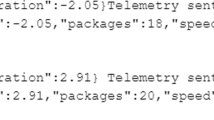Abstract
A reverse engineering approach to generate a virtual plant model is proposed. The model can be used for programmable logical controller (PLC) simulation. The virtual plant model for the PLC simulation consists of virtual device models and must interact with the input and output signals of a PLC. The behavior of a virtual device model should be the same as that of real device. Conventionally, the discrete event system specifications (DEVS) formalism has been used to represent the behavior of a virtual device model. Modeling using DEVS formalism, however, requires in-depth knowledge of the simulation area, as well as a significant amount of time and effort. One of the key ideas of the proposed methodology is to provide a method to generate a virtual plant model using both log data (time-stamped signal history) and a PLC I/O signal table extracted from the existing production system. The proposed reverse engineering approach provides two major benefits: (1) significant reduction in the time and effort for the construction of a reliable virtual plant model of a current production system, which can be referenced for newly planned production systems, and (2) reduction in the stabilization time of a production system through PLC simulation. The proposed approach was implemented and applied to an automated production line.
Similar content being viewed by others
References
Lucas MR, Tilbury DM (2005) Methods of measuring the size and complexity of PLC programs in different logic control design methodologies. Int J Adv Manuf Technol 26(5–6):436–447
Reinhart G, Wünsch G (2007) Economic application of virtual commissioning to mechatronic production systems. Prod Eng Res Dev 1(4):371–379
Hoffman P, Maksoud TMA, Schuman R, Premier GC (2010) Virtual commissioning of manufacturing systems a review and new approaches for simplification, Proceedings 24th European Conference on Modeling and Simulation
Drath R, Weber P, Mauser N (2008) An evolutionary approach for the industrial introduction of virtual commissioning, IEEE International Conference on Emerging Technologies and Factory Automation: 5–8
Xu Z, Zhao Z, Baines RW (2000) Constructing virtual environment for manufacturing simulation. Int J Prod Res 38(17):4171–4191
Park HT, Kwak JG, Wang GN, Park SC (2010) Plant model generation for PLC simulation. Int J Prod Res 48(5):1517–1529
Han KH, Choi SH, Park JW, Lee JW (2011) Rapid virtual prototyping and operational monitoring of PLC-based control system. Int J Math Comput Simul 5(3):198–205
Hibnio H, Inukai T, Fukuda Y (2006) Efficient manufacturing system implementation based on combination between real and virtual factory. Int J Prod Res 44(18):3897–3915
Koo LJ, Park CM, Lee CH, Park SC, Wang GN (2011) Simulation framework for the verification of PLC programs in automobile industries. Int J Prod Res 49(16):4925–4943
Ali Y, Ravi KN (2005) An object-oriented simulation framework for real-time control of automated flexible manufacturing systems. Comput Ind Eng 28(1):111–127
Tapken J (1997) Integrative and comparative simulation of PLC Automata, Simulation in Industry ESS'97 SCS: 552–556
Park SC, Park CM, Wang GN (2008) A PLC programming environment based on a virtual plant. Int J Adv Manuf Technol 39(11–12):1262–1270
Gourcuff V, De Smet O, Faure JM (2006) Efficient representation for formal verification of PLC programs, 8th International Workshop on Discrete Event Systems: 182–187
Bauer N, Engell S, Huuck R, Lohmann S, Lukoschus B, Manuel R, Olaf S (2004) Verification of PLC programs given as sequential function charts. Integration of Software Specification Techniques for Applications in Engineering Lecture Notes in Computer Science 3147:517–540
Pavlovic O, Pinger R, Kollmann M (2007) Automated formal verification of PLC programs written in IL. Conference on Automated Deduction (CADE):152–163
Richardsson J, Fabian M (2003) Automatic generation of PLC program for control of flexible manufacturing cells. IEEE Conf Merging Technol Fact Autom 2003:337–344
Mohsen AJ, Thomas OB (1994) A rule-based system for generating a ladder logic control program from a high-level systems model. J Intell Manuf 5(2):103–120
Frey G (2000) Automatic implementation of Petri net based control algorithms on PLC. Proc Am Control Conf ACC 2000:2819–2823
Sacha K (2005) Automatic code generation for PLC controllers. computer safety. Reliability, and Security Lecture Notes in Computer Science 3688:303–316
Choi SS, Jo HJ, Lee JY, Noh SD (2010) A rule-based system for the automated creation of VR data for virtual plant review. Concurr Eng Res Appl 18(3):165–183
Kim TG (1994) DEVSIM++user's manual. Department of Electrical Engineering, KAIST, Korea
Manesis S, Akantziotis K (2005) Automated synthesis of ladder automation circuits based on state-diagrams. Adv Eng Softw 36(4):225–233
Zeigler BP (1984) Multifaceted modeling and discrete event simulation. Academic, New York
Chang MH, Ko MS, Park SC (2011) Fixture modeling for an automotive assembly line. Int J Prod Res 49(15):4593–4604
Author information
Authors and Affiliations
Corresponding author
Rights and permissions
About this article
Cite this article
Park, S.C., Ko, M. & Chang, M. A reverse engineering approach to generate a virtual plant model for PLC simulation. Int J Adv Manuf Technol 69, 2459–2469 (2013). https://doi.org/10.1007/s00170-013-5209-1
Received:
Accepted:
Published:
Issue Date:
DOI: https://doi.org/10.1007/s00170-013-5209-1




